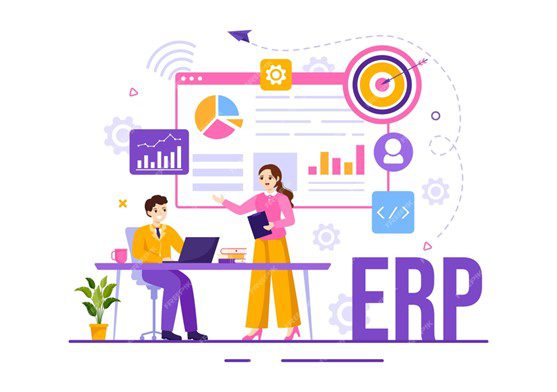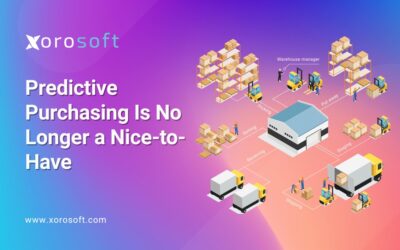
Introduction to ERP systems
As a small or medium-sized business (SMB) owner, I understand the importance of streamlining operations and maximizing efficiency. One of the most powerful tools at our disposal is an enterprise resource planning (ERP) system. ERP systems are comprehensive software solutions that integrate and manage various business functions, including accounting, inventory management, supply chain, and human resources.
In today’s fast-paced business environment, implementing an effective ERP system can be a game-changer for SMBs like ours. By centralizing and automating key processes, an ERP system can help us gain better visibility, make more informed decisions, and ultimately, drive growth and profitability.
Benefits of implementing an ERP system for small and medium-sized businesses (SMBs)
The benefits of implementing an ERP system for SMBs are numerous and far-reaching. Here are some of the key advantages:
- Improved Efficiency: An ERP system streamlines and automates various business processes, reducing manual tasks and eliminating the need for multiple software applications. This leads to increased productivity and a more efficient overall operation.
- Enhanced Data Integration: ERP systems integrate data from different functional areas, providing a single, unified view of the business. This allows for better decision-making, as we can access real-time, accurate information across the organization.
- Increased Visibility and Reporting: ERP systems offer robust reporting and analytics capabilities, enabling us to gain deeper insights into our business performance, identify trends, and make data-driven decisions.
- Better Inventory Management: ERP systems provide advanced inventory management functionalities, helping us optimize stock levels, reduce waste, and improve supply chain efficiency.
- Improved Financial Management: ERP systems integrate financial management capabilities, such as accounting, invoicing, and cash flow management, allowing us to better manage our finances and ensure compliance.
- Enhanced Collaboration and Communication: ERP systems can facilitate cross-departmental collaboration and communication, breaking down silos and fostering a more integrated and cohesive organization.
Key features and functionalities of an ERP system
A comprehensive ERP system typically includes the following key features and functionalities:
- Financial Management: Accounting, accounts payable and receivable, general ledger, and cash management.
- Inventory Management: Tracking of stock levels, purchase orders, and inventory movements.
- Supply Chain Management: Procurement, logistics, and vendor management.
- Human Resource Management: Employee records, payroll, and time and attendance tracking.
- Sales and Customer Relationship Management (CRM): Order management, invoicing, and customer data management.
- Business Intelligence and Reporting: Dashboards, analytics, and custom reporting.
- Workflow and Process Automation: Streamlining of business processes and task automation.
Choosing the right ERP solution for your SMB – An overview of Xorosoft ERP
When it comes to selecting the right ERP solution for our SMB, there are many factors to consider, such as industry-specific requirements, scalability, user-friendliness, and cost-effectiveness. One ERP system that has caught my attention is Xorosoft ERP.
Xorosoft ERP is a comprehensive, cloud-based ERP solution designed specifically for small and medium-sized businesses. It offers a wide range of features and functionalities that cater to the unique needs of SMBs like ours. Some of the key advantages of Xorosoft ERP include:
- Comprehensive Functionality: Xorosoft ERP covers all the essential business functions, from financial management and inventory control to human resources and customer relationship management.
- Scalability and Flexibility: The system is designed to grow with our business, allowing us to easily add new modules and users as our needs evolve.
- User-friendly Interface: Xorosoft ERP boasts a modern, intuitive user interface that makes it easy for our employees to navigate and adopt the system.
- Cloud-based Deployment: As a cloud-based solution, Xorosoft ERP eliminates the need for costly on-premises infrastructure and allows us to access the system from anywhere, at any time.
- Seamless Integration: Xorosoft ERP seamlessly integrates with a wide range of third-party applications, enabling us to create a comprehensive, end-to-end business management solution.
- Affordable Pricing: Xorosoft ERP offers a cost-effective subscription-based pricing model, making it accessible and scalable for SMBs like ours.
Streamlining inventory management with an ERP system
One of the key benefits of implementing an ERP system like Xorosoft ERP is the ability to streamline our inventory management processes. With real-time visibility into stock levels, purchase orders, and inventory movements, we can better optimize our supply chain and reduce the risk of stockouts or overstocking.
Xorosoft ERP’s advanced inventory management module allows us to automate various tasks, such as generating purchase orders based on pre-defined reorder points, tracking inventory across multiple locations, and generating detailed reports on inventory performance. This not only saves us time and resources but also helps us make more informed decisions about our inventory, leading to improved cash flow and profitability.
Moreover, the system’s integration with our sales and procurement processes ensures that our inventory data is always up-to-date and accurate, reducing the risk of manual errors and improving overall supply chain efficiency.
Enhancing financial management with an ERP system
Another critical aspect of our business operations is financial management, and an ERP system like Xorosoft ERP can significantly enhance this area. By integrating all of our financial data, including accounts payable, accounts receivable, and the general ledger, Xorosoft ERP provides us with a comprehensive view of our financial health.
The system’s robust accounting and reporting capabilities allow us to automate tasks such as invoicing, payment processing, and financial reporting. This not only saves us time and reduces the risk of errors but also enables us to make more informed, data-driven decisions about our financial management.
Xorosoft ERP’s financial management module also includes features like cash flow forecasting, budgeting, and financial analytics, helping us better plan and manage our financial resources. Additionally, the system’s compliance and audit-ready features ensure that we maintain accurate records and meet all relevant financial regulations.
Automating business processes with an ERP system
One of the most powerful benefits of an ERP system like Xorosoft ERP is its ability to automate various business processes, streamlining our operations and improving overall efficiency. By integrating and centralizing our data, Xorosoft ERP can help us eliminate redundant tasks, reduce manual errors, and ensure consistent, standardized processes across the organization.
For example, the system’s workflow automation capabilities allow us to define and streamline our approval processes, such as purchase order approvals or expense reimbursements. This not only saves time but also ensures that our business processes are consistently followed, enhancing our overall compliance and governance.
Furthermore, Xorosoft ERP’s integration with other business applications, such as our customer relationship management (CRM) system, enables us to create seamless, end-to-end workflows. This level of process automation and integration can have a significant impact on our productivity, decision-making, and customer service.
Implementing Xorosoft ERP – A step-by-step guide
Implementing an ERP system like Xorosoft ERP can be a complex and challenging process, but with the right approach, it can be a smooth and successful transition. Here’s a step-by-step guide to implementing Xorosoft ERP in our SMB:
- Assess and Define Requirements: Start by carefully evaluating our current business processes, pain points, and specific requirements. This will help us identify the key functionalities and features we need from an ERP system.
- Select the Right ERP Solution: Based on our assessment, we can then evaluate and select the ERP system that best fits our needs, such as Xorosoft ERP. Consider factors like industry-specific capabilities, scalability, ease of use, and cost-effectiveness.
- Plan the Implementation: Develop a detailed implementation plan that outlines the project timeline, resource requirements, and key milestones. Identify and involve key stakeholders, and assign clear roles and responsibilities.
- Data Migration and Integration: Ensure a seamless data migration process by working closely with the Xorosoft team to transfer our existing data securely and accurately into the new system. Integrate the ERP system with our other business applications, if necessary.
- User Training and Change Management: Invest in comprehensive user training to ensure that our employees are comfortable and proficient in using the Xorosoft ERP system. Develop a change management strategy to address any resistance or concerns.
- Go-live and Post-implementation Support: Carefully plan and execute the go-live process, ensuring that the system is functioning as expected. Maintain ongoing communication with the Xorosoft support team to address any issues or concerns that may arise.
- Continuous Optimization: Regularly review the performance of the Xorosoft ERP system and identify areas for improvement. Leverage the system’s reporting and analytics capabilities to make data-driven decisions and optimize our business processes.
By following this step-by-step approach, we can ensure a successful implementation of the Xorosoft ERP system and reap the full benefits of an integrated, efficient, and scalable business management solution.
Training and support for successful ERP system implementation
Implementing an ERP system like Xorosoft ERP is not just about the technology; it’s also about ensuring that our employees are equipped with the knowledge and skills to effectively use the system. That’s why Xorosoft offers comprehensive training and support services to help us achieve a successful ERP implementation.
The Xorosoft team provides in-depth training sessions, both in-person and online, to ensure that our employees understand the system’s various functionalities and how to leverage them to streamline our business processes. These training programs cover everything from basic navigation to advanced reporting and analytics, ensuring that our team is confident and proficient in using the system.
In addition to the training, Xorosoft also offers ongoing support and guidance throughout the implementation and beyond. Their dedicated support team is available to answer our questions, troubleshoot any issues, and provide us with the resources and best practices we need to maximize the benefits of the ERP system.
By investing in the right training and support, we can ensure that our Xorosoft ERP implementation is a success, with our employees fully engaged and the system integrated seamlessly into our day-to-day operations.
Measuring the success of your ERP system implementation
Implementing an ERP system like Xorosoft ERP is a significant investment, both in terms of time and resources. To ensure that we’re getting the most out of our investment, it’s crucial to measure the success of our ERP implementation and track the impact it has on our business.
Some of the key performance indicators (KPIs) we can use to measure the success of our Xorosoft ERP implementation include:
- Improved Operational Efficiency: Track metrics such as reduced processing times, decreased manual errors, and increased productivity.
- Enhanced Financial Management: Monitor improvements in cash flow, inventory turnover, and overall financial performance.
- Increased Visibility and Reporting: Assess the quality and timeliness of the reports and analytics generated by the Xorosoft ERP system.
- Improved Customer Satisfaction: Measure customer satisfaction levels, order fulfillment rates, and overall customer experience.
- Return on Investment (ROI): Calculate the tangible and intangible benefits of the Xorosoft ERP system and compare them to the implementation and ongoing costs.
By regularly monitoring these KPIs, we can identify areas for improvement, make data-driven decisions, and ensure that our Xorosoft ERP investment continues to deliver tangible benefits to our SMB.
Conclusion – The impact of an effective ERP system on SMB operations
Implementing an effective ERP system like Xorosoft ERP can have a transformative impact on the operations of small and medium-sized businesses like ours. By centralizing and automating key business processes, enhancing data integration and visibility, and improving overall efficiency, an ERP system can help us gain a competitive edge and drive sustainable growth.
Through our experience with Xorosoft ERP, we’ve witnessed firsthand the benefits of a comprehensive, user-friendly, and scalable ERP solution. From streamlining our inventory management and financial processes to automating our business workflows, Xorosoft ERP has become an invaluable tool in our quest to optimize our operations and unlock new opportunities for success.
As we continue to navigate the ever-changing business landscape, I’m confident that our investment in Xorosoft ERP will continue to pay dividends, helping us make more informed decisions, improve customer satisfaction, and ultimately, achieve our long-term goals.
If you’re an SMB owner looking to streamline your operations and unlock new levels of efficiency, I encourage you to Book a Demo with Xorosoft to learn more about how their comprehensive ERP solution can transform your business.









